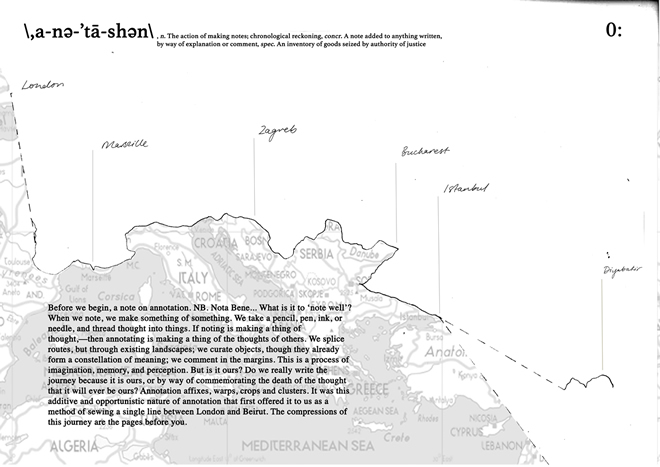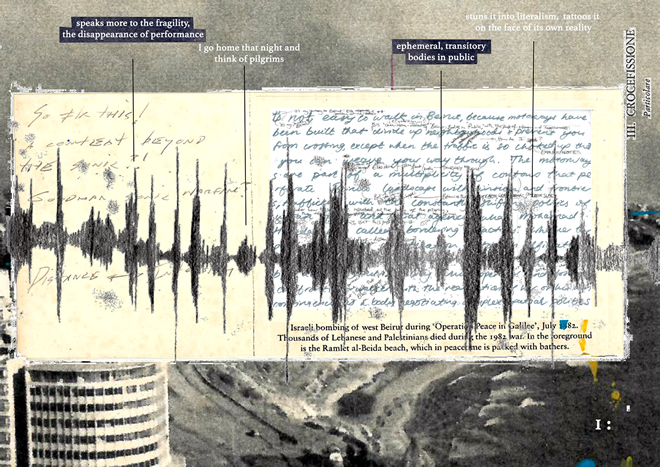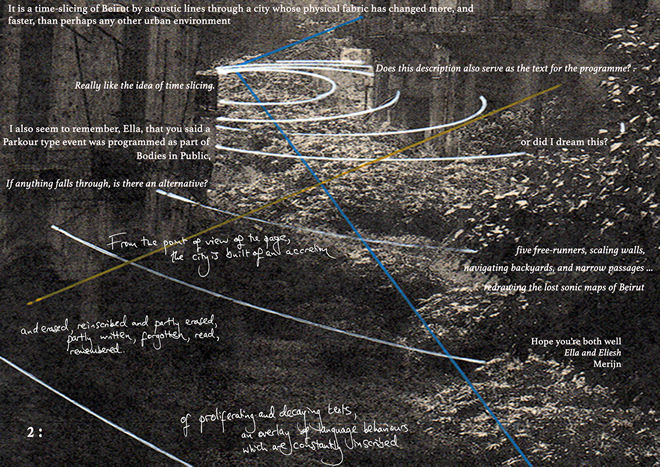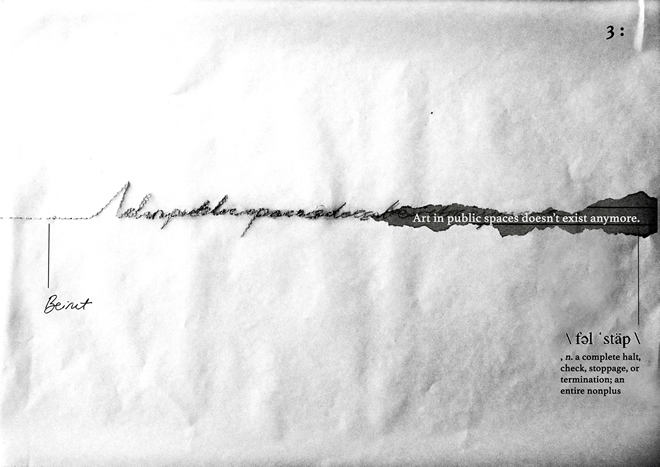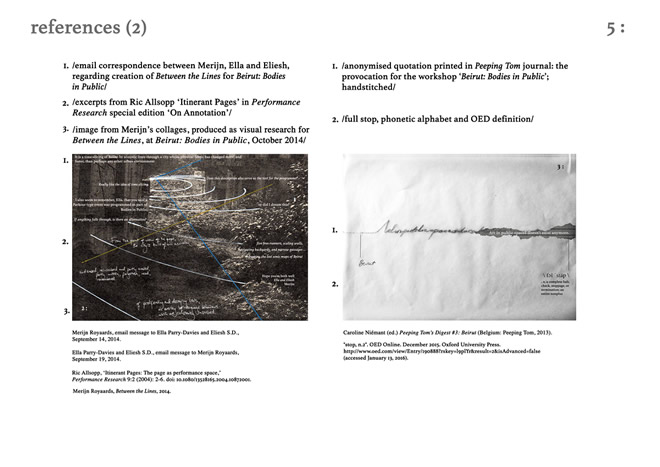I wonder if we really write the journey because it is ours, or by way of commemorating the death of the thought that it will ever be ours?We walked to Beirut together. Two women, standing on a balcony in Whitechapel, imbibing thoughts from the London skyline into the sinews of ink under our skin. We followed these lines into the past, to post-revolutionary Cairo, where an artist has devised a fake election campaign parodying the classed and gendered concerns that circle through political discourse. Slowly, subtly, almost silently, she re-captures her mendacities as decay on walls: the tears, caresses and effacements of the city made visible in images of peeling flyposts. Elsewhere, a man who has never been to Beirut pores over old photographs and postcards of the city. He begins to chart the movement of sound across images, from open window, through empty streets of rubble, to crowded beach; lines ricochet from stone walls. Later, with his own running body, he gives these sonic reverberations momentary corporeal presence, tracking the route that sound would have travelled through Beirut before the transformations caused by war and urban redevelopment. Are these additive actions? How do these shared lines of transference index the remains of the past?
‘Exhibit Notes’, Terror and the Tour
annotation, n. / ænəʊˈʈeɪʃən/
1. The action of annotating or making notesResponding to the indexical, transformative and resonant qualities of the shared endeavour Walking into Beirut, we want to suggest annotation as a coordinate for processes of imagination, memory and perception, bound together through aesthetic engagement with a shifting political terrain. Annotation is a research journey that affixes, warps, crops and clusters: we map splicing routes, we distill curated objects and we comment in warping margins. These artist’s pages will become a site for performing and interrogating the annotative actions of the research journey Walking into Beirut. In text, colour images, hand-sewn threadwork and collage, scanned to produce ‘zoomable’ digital images, this piece will present a hand-produced document of the research journey.
2. The action of marking by a particular date or era; chronological reckoning or notation. Obs.
3. a. concr. (usually pl.) A note added to anything written, by way of explanation or comment.
b. spec. An inventory of goods seized by authority of justice. (So in French). Obs. rare.
Ella Parry-Davies is a doctoral researcher at King's College London and the National University of Singapore, working on cultural remembrance and public space in Beirut and Singapore. She has published in Performance Research and Performance Philosophy, and is an editor of Interventions (Contemporary Theatre Review). She convened 'Beirut: Bodies in Public', a workshop on performance and public space in the Lebanese capital in 2014, and is a founding member of After Performance, a research collective concerned with collaborative critical responses to contemporary geopolitics.
Penny Newell is a poet and researcher, currently based at King's College London. Her poetry has been featured in The Cardiff Review, Don't Do It Mag, The Still Point Journal, Ways to Wander (Triarchy Press, 2015), and Letterpress Poets Anthology (Palewell Press, 2015), amongst others. Her academic articles have been featured in Performance Research (Routledge/Taylor & Francis), Excursions (Sussex University) and Platform (Royal Holloway), with a chapter forthcoming in The Handbook for Creativity at Work (Palgrave MacMillan, 2017).
Merijn Royaards is a practitioner who works in, and between, the fields of music, visual arts and architecture. His current research looks at the first convergences of these fields in history, and investigates the implications of such convergences to current architectural discourse. While most of his publications and speaking engagements have been on sonic experience, his live-performances and exhibitions combine electronic dance music, sound installation, and free improvisation.

